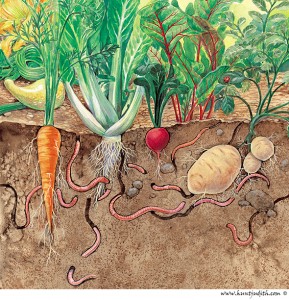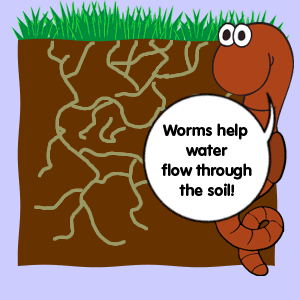Some Known Incorrect Statements About North Carolina Worms
The 8-Minute Rule for North Carolina Worms
Table of ContentsThe Basic Principles Of North Carolina Worms North Carolina Worms Can Be Fun For EveryoneThe 6-Minute Rule for North Carolina WormsThe Of North Carolina Worms
Example: 1-gallon of worm spreadings to 4 gallons of potting mix. 1/2 mug in the bottom of the planting opening for smaller sized plants. 1 cup for larger plants.
The enhancement of tea can also include boosted microbial biomass to your soil. You can constantly side-dress your plants with worm castings at any moment. Simply keep in mind, the microbes will pass away if subjected to UV rays (Sun), so be certain to cover the castings with an inch or so of dirt.
This baffled them for years till the testing approaches ended up being better. It would certainly get far better(with more spreadings), level off, and then decrease. Too lots of worm spreadings would certainly accelerate the development to a pace that the plant could not recuperate from.
The 8-Minute Rule for North Carolina Worms
Many herbicides work on this same principle. So, 20% by volume seems to be the "Sweet Spot". I have stated the virtues of worm castings for about 2000 words. What about the opposite of the coin? Nothing is perfect. Worm castings are no various. It requires time to develop top quality worm spreadings.
Worm spreadings definitely set you back more than chemical fertilizers. Worm spreadings are on the less expensive end of natural fertilizers. (50 gallons per year) It is a much harder and extremely expensive financial investment to produce huge amounts of worm spreadings.

Producing a healthy dirt may be the greatest advantage of worm castings. Healthy and balanced soil was discussed and just how crucial this has become to everyone. The top 10 benefits of worm castings were also provided. We discussed worm spreadings NPK and also the correct nutrient analysis that need to relate to worm spreadings.
The Facts About North Carolina Worms Uncovered
We chatted concerning some of the disadvantages associated with worm castings. I covered a lot of material in this short article.
The upright burrows are commonly open, although the worms cover the top with residue and excrement. Origins need oxygen for their growth, whereas they generate carbon dioxide that requires to leave the soil.
Earthworms increase porosity by 2 systems: (1) by producing permanent burrows, and (2) by boosting dirt aggregation. Gathering is enhanced by the mixing of dirt and natural matter in the earthworms' intestines. North Carolina Worms. These very steady aggregates are transferred by some earthworms in their burrows, and by others at the surface of the dirt


In another study, earthworms were estimated to take in 4 to 10 percent of the leading 6 inches of the dirt each year. This only mosts likely to reveal the enormous amounts of soil that can be processed by earthworms. Soil compaction reduces the porosity of the soil. Since earthworms boost porosity, they lower the results of compaction.
The North Carolina Worms Ideas
Normal earthworm populations can quickly consume 2 lots of dry matter per acre per year, partly absorbing and blending it with dirt. The significance of earthworms to mix surface residue with dirt becomes very clear in dirts that do not have any type of earthworms. A lot of our Pennsylvania soils contend least some earthworms, and the effect of their full lack, for that reason, can not be noted.
(https://www.ourbizdirectory.com/lenoir/retail/north-carolina-worms)In these soils, the development of topsoil with affordable raw material material did not take location, leading to bad crop development. When the cause was established, the government of the Netherlands started a project to present earthworms. After the intro of the earthworms, a dark topsoil layer was developed, and crop growth increased substantially.
They live primarily from partly decomposed natural issue that is already incorporated in the soil. They consume their means with the soil, creating straight burrows that they loaded with their excrement. These species consume big amounts of soil that they combine with absorbed crop deposit in their intestines. or anecic types live in irreversible upright burrows that can be 5 or 6 feet deep.
Their burrows remain open, although they cover the top with plant deposit that they pull to the entry. These types ingest substantial quantities of soil that they blend with digested deposit in their digestive tracts. Their excrement is mostly deposited at the surface area of the soil. The nightcrawler Lumbricus terrestris is one of the most popular participant of this group.